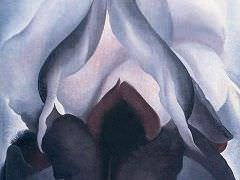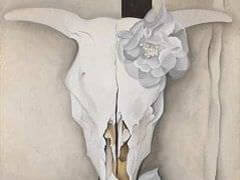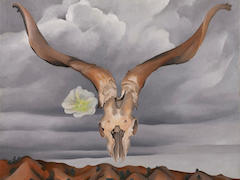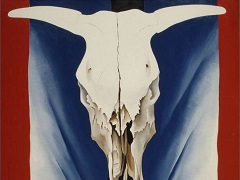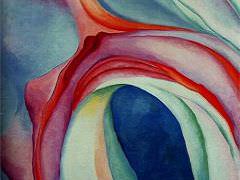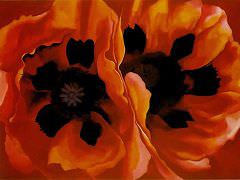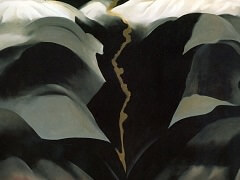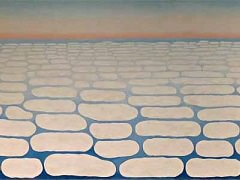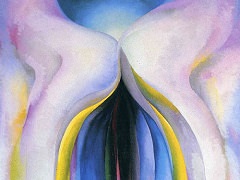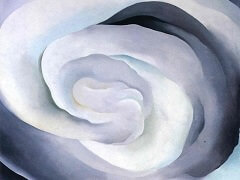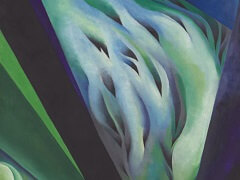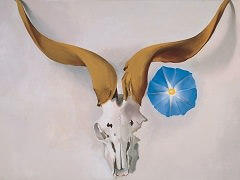Pelvis with the Distance, 1943 by Georgia O'Keeffe
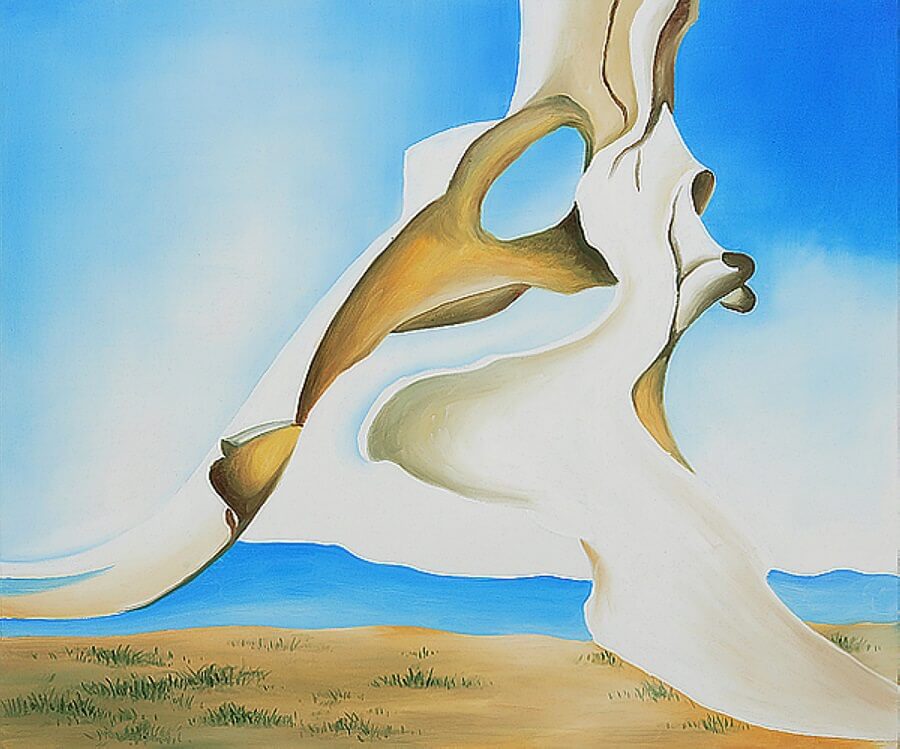
Although the American artist Georgia O'Keeffe was not a Surrealist and did not belong to a group, there are aspects of her work that lend themselves to its aesthetic, O'Keeffe belonged to a loose collective of artists known as 'Precisionists' that flourished in America during the 1920s, They were not a formal group, but sometimes exhibited together, displaying works that were devoid of humanity and lacking any kind of social comment. They touch base with the so-called Magic Realism of artists such as Salvador Dali who used photographic naturalism in strange juxtapositions to convey a feeling of the uncanny. The term 'Magic Realism' gained currency in America, particularly Latin America, following on exhibition in 1943 at the Museum of Modern Art in New York called American Realists and Magic Realists, in which Alfred Barr, the museum's director, referred to the artists who, 'try to make plausible and convincing their improbable, dreamlike or fantastic visions'. Barr was a significant figure in developing American Modernism, through his acquisitions of key works of European modern art for the museum.
O'Keeffe's brand of Magic Realism was inspired by the photographic use of soft focusing of the landscape, a technique she had learned from her husband, the photographer Alfred Stieglitz.

